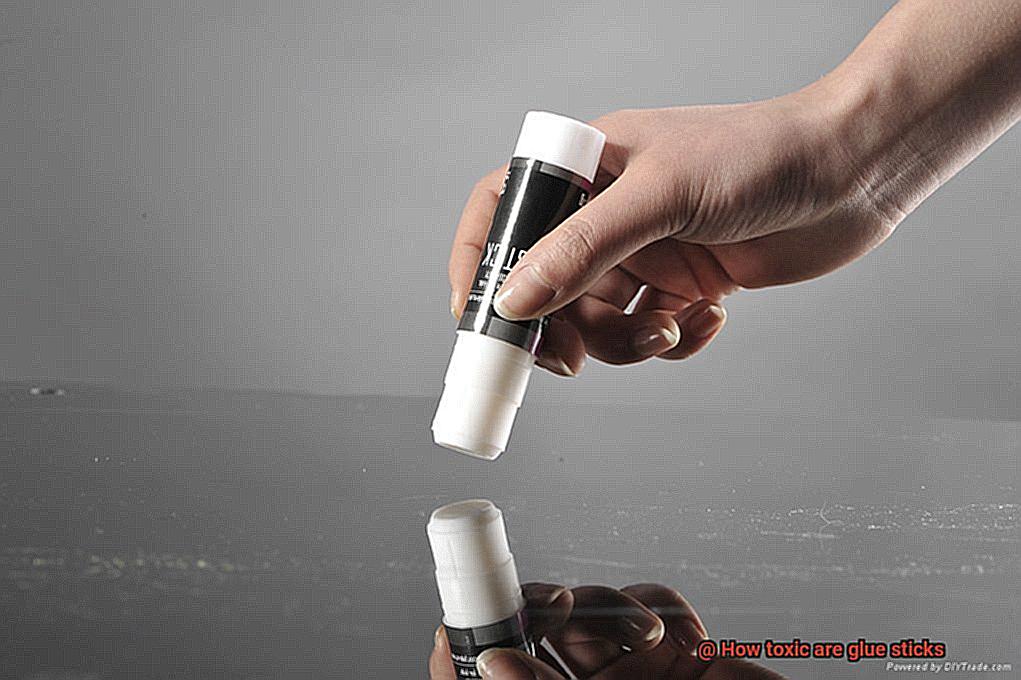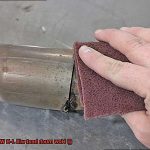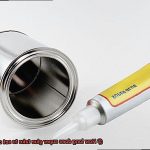We all love ’em for their magical bonding powers, but have you ever stopped to ponder the dark side of these innocent-looking adhesives? In a world where chemical safety is no joke, it’s time we dig deep and uncover the truth about glue stick toxicity. Sure, they may seem harmless, but lurking beneath that smooth exterior could be hidden dangers that deserve our attention.
So buckle up, folks. In this blog post, we’re diving headfirst into the sticky world of glue stick toxicity – separating fact from fiction and unveiling the adhesive secrets that lie within.
It’s time to peel back those layers and embark on a journey you won’t soon forget.
What are Glue Sticks?
Contents
Glue sticks, the unsung heroes of the crafting world, are an essential tool for artists, students, and office workers alike. With their solid form, easy application, and speedy drying time, glue sticks have become a go-to adhesive option. In this article, we will explore the captivating world of glue sticks, from their composition and versatility to safety considerations and tips for optimal use.
Composition:
At the heart of every glue stick lies a unique blend of synthetic polymers like polyvinyl acetate (PVA) or ethylene vinyl acetate (EVA). These non-toxic materials make glue sticks safe for users of all ages. Unlike their liquid counterparts, glue sticks offer a mess-free experience, allowing for precise control during application.
Versatility:
From paper and cardboard to fabric and wood, glue sticks have the uncanny ability to bond various materials together. Whether you’re working on a scrapbooking project or repairing a broken item, glue sticks are your reliable companion. They effortlessly adhere to a wide range of surfaces, making them an indispensable tool for any creative endeavor.
Ease of Use:
Simplicity is the name of the game when it comes to glue sticks. No additional tools or equipment are needed – just grab the tube and get to work. With a simple twist-up mechanism, the adhesive is dispensed smoothly and evenly onto your desired surface. Say goodbye to messy spills and hello to hassle-free crafting.
Quick-Drying:
Time is of the essence in the world of creativity, and glue sticks understand that. Within seconds or minutes (depending on the brand), these magical sticks transform from sticky substances to solid bonds. This rapid drying time ensures that your projects can be completed swiftly without compromising quality.
Safety Considerations:

While glue sticks are generally safe to use, it’s important to exercise caution, especially with young ones around. Some glue sticks may contain potentially harmful chemicals like volatile organic compounds (VOCs) or formaldehyde. To minimize any potential risks, consider the following safety tips:
- Opt for low-toxicity or non-toxic glue stick options.
- Use glue sticks in a well-ventilated area to avoid inhaling any fumes.
- Avoid direct skin contact and wash hands thoroughly after use.
- Read product labels and reach out to the manufacturer for more information if you have specific concerns or sensitivities.
Potential Toxins in Glue Sticks
Glue sticks are a staple in the world of arts and crafts, as well as a handy tool in offices and schools. They offer a convenient and mess-free way to adhere paper, fabric, and other materials together. But did you know that there could be potential toxins lurking in these seemingly harmless sticks? Don’t worry, we’ve got you covered. In this article, we’ll dive into the potential toxins found in glue sticks and share some tips on how to minimize any associated risks.
One common concern with glue sticks is the presence of volatile organic compounds (VOCs). These are chemicals that can vaporize at room temperature and may have adverse health effects when inhaled or absorbed through the skin. Some examples of VOCs that may be found in glue sticks include toluene, xylene, and ethylbenzene. These substances have been associated with respiratory irritation, dizziness, headaches, and even long-term health effects with prolonged exposure.
Another potential toxin in glue sticks is formaldehyde. This known carcinogen can irritate the eyes, nose, throat, and skin. It is commonly used as a preservative in various products, including adhesives.
The concentration of these toxins in glue sticks can vary depending on the brand and manufacturing process. It is important to read the labels or safety data sheets provided by the manufacturer to determine the presence and concentration of any potentially harmful substances.
So how can you minimize any risks associated with using glue sticks? Here are some tips:
- Read the labels: Always check the labels or safety data sheets provided by the manufacturer. Look for glue sticks labeled as non-toxic or low VOC if you have concerns about potential toxins.
- Choose safer alternatives: Some manufacturers have taken steps to produce safer glue sticks by reducing or eliminating certain toxins. Look for eco-friendly or natural options that are free from harmful chemicals.
- Proper ventilation: When using glue sticks, make sure to work in a well-ventilated area to minimize exposure to any potentially harmful fumes. Open windows or use fans to circulate fresh air.
- Minimal contact with skin: Try to avoid direct contact with the glue stick adhesive. Wear gloves or use tools like popsicle sticks or brushes to apply the glue instead.
- Use gloves: If you frequently use glue sticks or work in an environment where exposure may be higher, such as in a poorly ventilated space, it is advisable to wear gloves to further reduce any potential risks.
Volatile Organic Compounds (VOCs)
Volatile Organic Compounds (VOCs) are organic chemicals that have a high vapor pressure at room temperature, causing them to easily evaporate into the air. Glue sticks, those handy little adhesive tools we rely on for arts and crafts, school projects, and office work, often contain VOCs that can be potentially toxic. One common VOC found in glue sticks is ethylene-vinyl acetate (EVA), a substance also used in other adhesives and plastics. Additionally, glue sticks may contain other VOCs such as butyl acetate, toluene, and methyl ethyl ketone (MEK).
Exposure to VOCs can have detrimental effects on human health, particularly when inhaled or absorbed through the skin. Short-term exposure to high levels of VOCs can result in symptoms like headaches, dizziness, eye and throat irritation, and even nausea. However, prolonged or repeated exposure to these compounds can lead to more severe health problems, causing damage to the liver, kidneys, and central nervous system.
To minimize the risk of exposure to VOCs in glue sticks, it is crucial to use them in well-ventilated areas. Open windows or utilize fans to enhance air circulation and reduce the concentration of VOCs in the surrounding environment. Additionally, wearing gloves when using glue sticks can help prevent direct contact with the adhesive and decrease the likelihood of absorption through the skin.
Proper storage of glue sticks is also vital in minimizing VOC exposure. Ensure that glue sticks are tightly closed when not in use to prevent evaporation of VOCs into the air. Storing them in cool, dry places will help maintain their quality and minimize the release of these potentially harmful chemicals.
For those concerned about the toxicity of VOCs in glue sticks, it is worth exploring low-VOC or VOC-free alternatives. Some manufacturers produce glue sticks specifically formulated with reduced VOC content to provide a safer option for users.
Formaldehyde
Glue sticks are our trusty companions in all things crafty and creative. But did you know that they might also be hiding a potentially harmful ingredient? Today, we’re diving into the world of glue sticks to uncover the truth about formaldehyde exposure and its potential risks. So grab a seat, put on your safety goggles, and let’s stick together as we explore this sticky situation.
The Lowdown on Formaldehyde:
Formaldehyde, a colorless and pungent gas, is commonly used as a preservative in glue sticks. Unfortunately, this chemical has been classified as a known human carcinogen by the International Agency for Research on Cancer (IARC). Prolonged exposure to formaldehyde has been linked to an increased risk of cancer, particularly leukemia and nasopharyngeal cancer. It can also lead to respiratory issues like coughing, wheezing, and shortness of breath.
Inhalation Is the Culprit:
When it comes to glue sticks, the primary concern is inhaling formaldehyde vapors. To minimize exposure, always ensure proper ventilation in your workspace. Open a window or use a fan to circulate fresh air. Additionally, avoid excessive inhalation of glue stick fumes by taking breaks and stepping outside for some fresh air.
Heat and Formaldehyde Don’t Mix:
Heating glue sticks can release higher levels of formaldehyde emissions. So, when using glue sticks, it’s crucial to work in well-ventilated areas and steer clear of direct contact with heated surfaces. Remember, safety first.
Low-Formaldehyde Alternatives:
To address these concerns, some manufacturers have developed low-formaldehyde or formaldehyde-free glue stick alternatives. These products are often labeled as “low VOC” or “non-toxic.” Choosing these options can help reduce your exposure to formaldehyde and minimize potential health hazards.
Low-Toxicity and Non-Toxic Glue Stick Options
Today, we embark on a journey to explore the captivating world of low-toxicity and non-toxic options.
Now, let’s address the burning question: why do we need these alternatives? Traditional glue sticks often contain formaldehyde, a chemical that can pose risks to our health. But fear not. Low-toxicity and non-toxic glue sticks come to our rescue, offering a safer option for all our gluing endeavors.
So, what sets these options apart? Low-toxicity glue sticks contain a reduced amount of toxic chemicals compared to their traditional counterparts. They serve as a commendable step towards minimizing our exposure to potentially harmful substances. On the other hand, non-toxic glue sticks are formulated without any toxic ingredients whatsoever. They emerge as the superhero of glue sticks, completely safe for use.
When it comes to ingredients, both low-toxicity and non-toxic glue sticks boast the inclusion of water, natural resins, and plant-based solvents. These components not only enhance their safety profile but also bestow them with a delightful fragrance, setting them apart from their traditional counterparts. No more holding your breath while embarking on your crafting adventures.
Of course, safety should always reign supreme. Although these glue sticks offer safer options, it is crucial to adhere to safety guidelines. Avoid ingesting them or having prolonged skin contact – let’s prioritize our well-being.
The good news is that low-toxicity and non-toxic glue stick options are readily available in office supply stores and online retailers. When making a purchase, be on the lookout for certifications or labels indicating their low toxicity or non-toxic nature.
How to Use Glue Sticks Safely
Glue sticks are awesome for all your arts and crafts projects. They’re easy to use and don’t make a mess like liquid glue. But did you know that using glue sticks safely is super important? Let’s learn how to keep ourselves safe while having fun with glue sticks.
Read the Instructions:
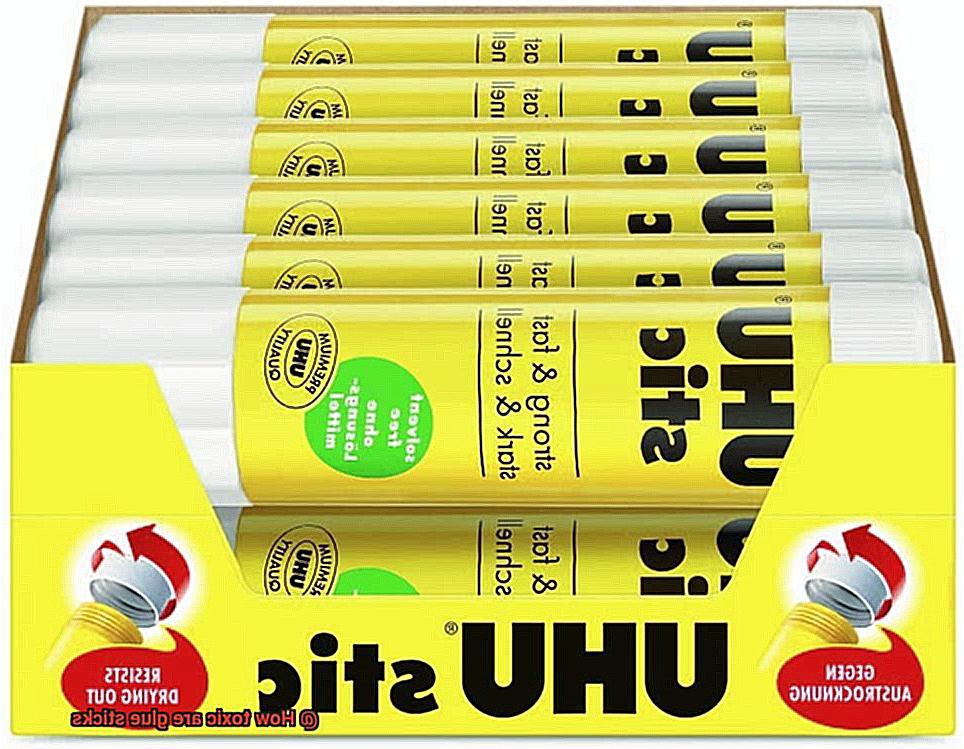
Before you start gluing, always read the instructions on the glue stick package. The instructions will tell you important safety information and how to use the glue stick correctly. Each brand of glue stick may have specific guidelines, so it’s essential to follow them carefully.
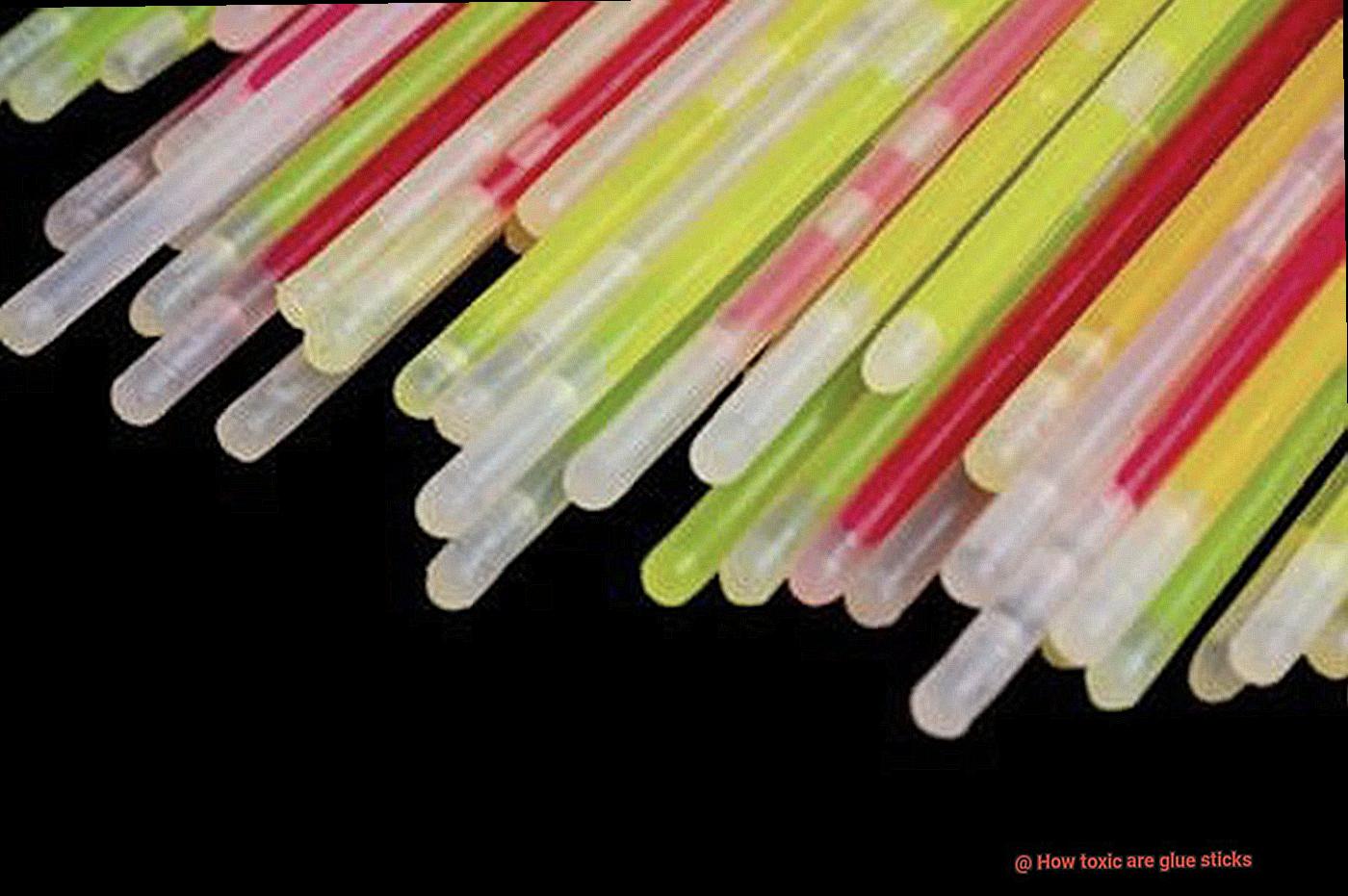
Use in a Well-Ventilated Area:
Glue sticks can sometimes give off fumes that can irritate your nose and lungs. So, make sure you use them in a well-ventilated area, like near a window or outside. If you’re working in a small space, ask an adult if you can wear a mask to protect your lungs. Good ventilation helps ensure that any fumes or vapors are dispersed quickly, reducing the risk of inhalation.
Keep Away from Your Face:
Glue sticks might look tempting, but don’t put them near your mouth, nose, or eyes. Accidentally swallowing or getting glue stick in your eyes can be dangerous. Keep them away from these sensitive areas. If you accidentally get glue stick on your skin or near your eyes, rinse with water immediately and seek medical attention if irritation persists.
Adult Supervision:
If you’re a younger kid, it’s always a good idea to have an adult supervise you while using glue sticks. They can help you use it correctly and make sure you stay safe. Glue sticks should be used under adult supervision to ensure that they are being used properly and that accidents are prevented.
Wash Your Hands:
After using a glue stick, make sure to wash your hands with soap and water. This will help get rid of any residue on your skin and prevent any irritation. When using glue sticks, some of the glue may transfer onto your hands, and it’s important to clean them thoroughly afterward to avoid any potential skin irritation or accidental contact with sensitive areas like the eyes or mouth.
Checking Product Labels and Contacting Manufacturers
Whether you are an artistic virtuoso or a novice explorer of the arts and crafts universe, one thing remains paramount – your safety. In order to ensure that your creative endeavors remain safe and enjoyable, it is of utmost importance to carefully scrutinize product labels and establish direct contact with manufacturers. By doing so, you can navigate the treacherous terrain of toxic glue sticks with confidence and peace of mind.
Product labels serve as beacons of caution, guiding you away from potential hazards. Take a moment to delve into the intricate details of these labels, seeking out any warnings or safety precautions that may lay hidden. Beware the words that raise crimson flags in your mind – “toxic,” “harmful if swallowed,” or “keep out of reach of children.” These verbal sirens signal the presence of harmful chemicals within the glue stick, chemicals that could pose a risk if ingested or come into prolonged contact with skin.
Yet, do not halt your quest for knowledge there. Venture deeper into the label’s labyrinthine expanse, searching for safety certifications or approvals bestowed upon the glue stick by reputable organizations. These accolades serve as sentinels, assuring you that the glue stick has undergone rigorous testing and adheres to stringent safety standards. Should the label fail to provide clear indications regarding toxicity or safety, take heart – it is time to embark upon a personal odyssey by contacting the manufacturer.
Direct communication with the manufacturer is a veritable treasure trove of information. Reach out to them through customer service lines or email addresses, armed with the product’s name, batch number, and any other pertinent information. Engage in a dialogue that unravels the mysteries surrounding toxicity levels and potential health risks associated with the glue stick in question. The manufacturer holds the key to enlightenment, providing you with specific details that empower you to make an informed decision.
Remember, the quest for safety does not end with checking product labels and contacting manufacturers. Embrace the wisdom of following proper safety guidelines – wield your glue stick in well-ventilated areas, shun ingestion or skin contact, and seek the guidance of an adult when necessary.
Also Read: Is Hot Glue Toxic? – Glue Things
Conclusion
In conclusion, glue sticks are generally considered safe for use. However, it is crucial to be aware of potential risks and take necessary precautions to ensure your well-being. The composition of glue sticks, typically crafted from non-toxic materials like polyvinyl acetate (PVA) or ethylene vinyl acetate (EVA), makes them suitable for users of all ages. With their mess-free application and quick-drying time, they offer convenience and versatility in bonding various materials together.
Nevertheless, it’s essential to note that certain glue sticks may contain potentially harmful chemicals such as volatile organic compounds (VOCs) or formaldehyde. These toxins can have adverse health effects when inhaled or absorbed through the skin. To minimize any associated risks, it is advisable to opt for low-toxicity or non-toxic options. Additionally, using glue sticks in well-ventilated areas and avoiding direct skin contact can further reduce potential hazards.
Furthermore, VOCs found in glue sticks have the tendency to evaporate into the air and pose health risks when inhaled. By ensuring proper ventilation and minimizing contact with heated surfaces, you can effectively lower your exposure to these harmful substances. It is worth considering low-formaldehyde or formaldehyde-free alternatives as an extra precautionary measure.
Ultimately, prioritizing safety when using glue sticks involves following instructions carefully, working in well-ventilated spaces, keeping them away from sensitive areas like the eyes and mouth, washing hands thoroughly after use, and seeking adult supervision for younger children.
To gain a better understanding of the toxicity levels and potential health risks associated with a specific glue stick brand or type, it is recommended to check product labels for warnings or safety certifications. Additionally, contacting manufacturers directly can provide valuable information regarding their products’ toxicity levels.

